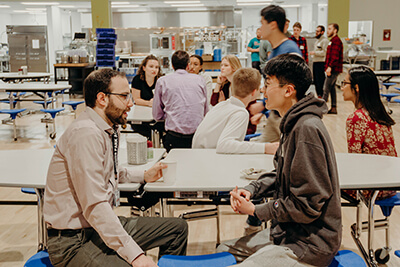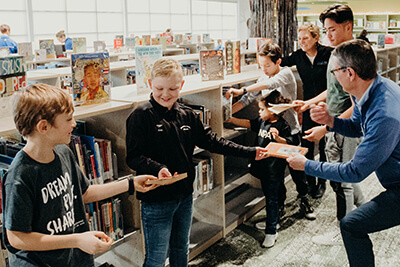February 26, 2020
 by Dr. Bill Hudson, Head of School
by Dr. Bill Hudson, Head of School
I couldn’t wait to get my driver’s license. The summer I turned 16, I was a counselor at a Boy Scout camp in Michigan. I asked my dad to drive up to camp so I could go to the local office and take the written and behind the wheel tests. I passed both with flying colors and achieved this important milestone of adolescence. Please note, this was not much of an accomplishment as the population of the town where I took the behind the wheel portion of the test was just under 2000. Given how important it was for my friends and me to drive, it has surprised me that more and more students in high school these days don’t have, and are not in a hurry to get, their driver’s license.
There is some very interesting quantitative research conducted on generational differences that explains this anecdotal observation. According to professor of psychology and author Jean M. Twenge, today’s young people, who she calls the iGen, are growing up slower than previous generations. Accounting for 24 percent of the population of the United States, iGen are those born between 1995 and 2012. Examples of this phenomenon are that they are less likely to: Read More
 by Dr. Bill Hudson, Head of School
by Dr. Bill Hudson, Head of School by Jenn Milam, Ph.D., Middle School director
by Jenn Milam, Ph.D., Middle School director by Dr. Bill Hudson, Head of School
by Dr. Bill Hudson, Head of School Joanne Olson, MPA’s first Lower School director, is fond of saying that MPA was born “of a dream and a shoestring.” What started as the dream of founders Bob Kriescher and Sandy Kriescher Smith, quickly became the dream of parents and educators from across the Twin Cities. Bob, Sandy, our founding teachers, board members, and parents pooled what resources they could muster to make their dream a reality on a shoestring budget that would have a lasting impact.
Joanne Olson, MPA’s first Lower School director, is fond of saying that MPA was born “of a dream and a shoestring.” What started as the dream of founders Bob Kriescher and Sandy Kriescher Smith, quickly became the dream of parents and educators from across the Twin Cities. Bob, Sandy, our founding teachers, board members, and parents pooled what resources they could muster to make their dream a reality on a shoestring budget that would have a lasting impact. by Dr. Bill Hudson, Head of School
by Dr. Bill Hudson, Head of School by Dr. Bill Hudson, Head of School
by Dr. Bill Hudson, Head of School by Renee Wright, Lower School director
by Renee Wright, Lower School director  by Dr. Bill Hudson, Head of School
by Dr. Bill Hudson, Head of School by Dr. Bill Hudson, Head of School
by Dr. Bill Hudson, Head of School